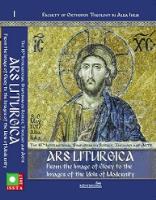The issue of the written and iconic signifier in the theology of Theodor Abū Qurrah
The issue of the written and iconic signifier in the theology of Theodor Abū Qurrah
Author(s): Oliviu-Petru BotoiSubject(s): Christian Theology and Religion, Theology and Religion
Published by: Facultatea de Teologie Ortodoxă Alba Iulia
Keywords: icons; words; Scripture; Islam; dogmatic-moral values;
Summary/Abstract: Theodore Abū Qurrah was among the first Orthodox theologians preoccupied by the problem of the icons. He was an apprentice of Saint John Damascene and the first Orthodox theologian who wrote in Arabic. Living in the space of the Near and Middle East, born in Edessa, ordained as bishop in Harran and with the experience of travelling from Armenia to Egypt, Qurrah had to protect the cult of the holy icons in front of a small Christian community (Chalcedonian and non-Chalcedonian) and against a huge attack from the Muslim theologians. Although his Treatise on the Veneration of the Holy Icons follows and reproduces the argumentation of Saint John Damascene, there are remarked some original ideas, too. One of the five sets of arguments specific to his Treatise refers to the relation between the written representation of the theology (Torah, Gospels, Koran) and its iconic representation (the Christian icons). In the same time, the author develops the problem of the signifiers in the Islamic and Judaic cults for the cognition of the signified. We appreciate as relevant to nuance some comparative aspects between Christianity and Islamism, even this theological aspect of the iconology was discussed in dedicated writings. The icon as Gospel was much discussed, but our intention is to discuss the Gospel as icon.
Journal: Altarul Reîntregirii
- Issue Year: XXII/2017
- Issue No: Suppl_1
- Page Range: 247-259
- Page Count: 13
- Language: English

